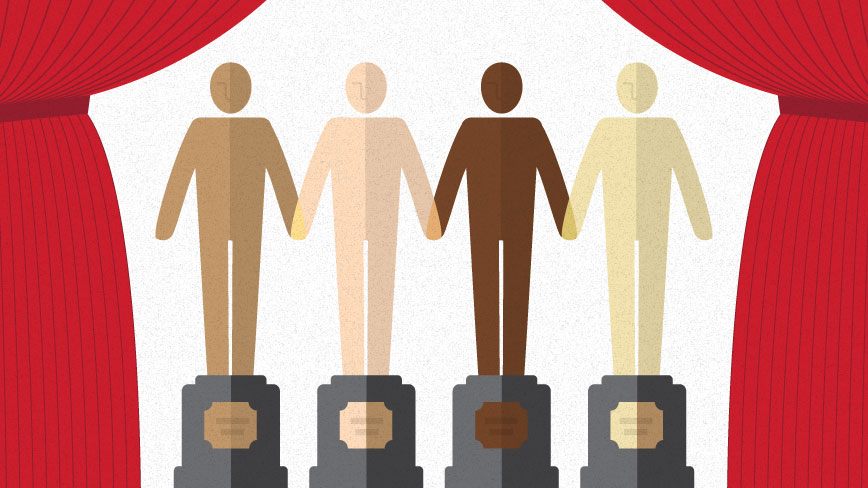The award show season allows us to examine how marketers should avoid rifts between themselves and audiences by recognizing diversity and media preferences.
Grab some popcorn and get ready to watch how diversity and marketing intersect during this year’s award show season. Online streaming and social media have reconstructed contemporary media consumption, and nowhere is this more evident than the current awards show season. More so than the awards and nominees themselves, conversations about the metaculture of the awards shows, especially the Academy Awards, dominate social media.
There is a visible theme to these conversations. It’s one that shows how the Oscars and other shows like it have lingered in the past while society’s diversity reshapes the present. Diversity and relevancy provide a framework through which the outcomes of award shows are picked apart for the world to see.
Marketers who learn from this process can tap into learning what people want and seek out the platforms where they want it. As a result, they can cater campaigns to these wants.
Diversity Leads to Increased Ratings
The 2016 Oscars stirred controversy for not recognizing diverse actors in multiple categories, despite the popularity of the films they were part of. As a result, it can be argued that the controversy caused last year’s 88th Academy Awards to have the lowest viewership ratings since 2008. That suggestion adds weight when considering that last year’s 70th Tony Awards, which prominently featured a popular and diverse musical, reached a 15-year ratings peak and a 35% bump over the year before.
This year’s Golden Globes similarly showed an 8% jump in viewership, coinciding with the recognition of more diverse and culturally-celebrated films.
Chief among the issues is that what large studios, and the Academy by proxy, expect audiences to respond to increasingly does not reflect reality. For example, media outlets raised questions about the ability of marketers to successfully market a black LGBT-centric film. However, the indie hit went on to universal critical acclaim by winning the 2017 Golden Globe for Best Picture, Drama, and it found stellar box office returns on a per-screen basis.
For marketers, representation and recognition remain big strategic problems when reaching out to increasingly diverse marketing groups. Much like the Oscars diversity controversy, the disconnect between what audiences see and what curators think they should be seeing could prevent campaigns from being successful.
Marketers follow platform changes
Another disconnect between the organization behind the Oscars and audiences lies in the growing split between film and TV-style media production. Many of the perceived frontrunners for this year’s Academy Award for Best Documentary Feature have prominent backing from streaming platforms. These hopefuls include a sports documentary, which received extremely high viewership from cable streaming and subscription video on demand after qualifying with limited-engagement runs in theaters.
The non-traditional nature of these films shows how audiences are shifting from typical movie-going and TV-watching experiences toward video-on-demand and streaming content. Marketers have been adjusting to this trend for several years, but the changing territory invites further evolution and disruption.
As the world continues to experience this year’s award show season, including the upcoming Academy Awards, hopefully the diversity of the audience and their viewing preferences will be reflected in the nominees and winners as well as the advertising spots slated to run during the shows. Otherwise, the disconnect between audiences and curators will continue to grow.

